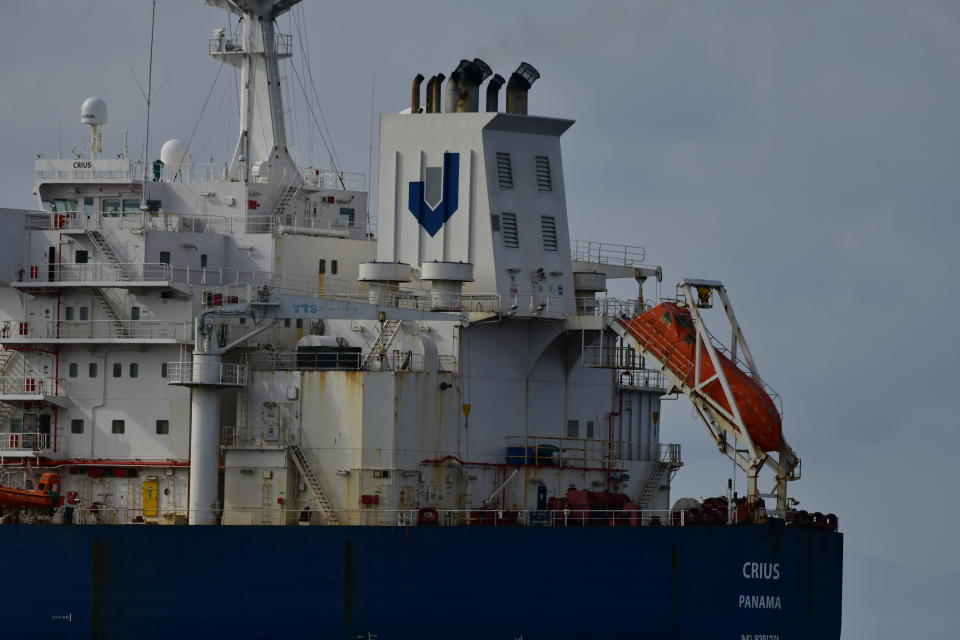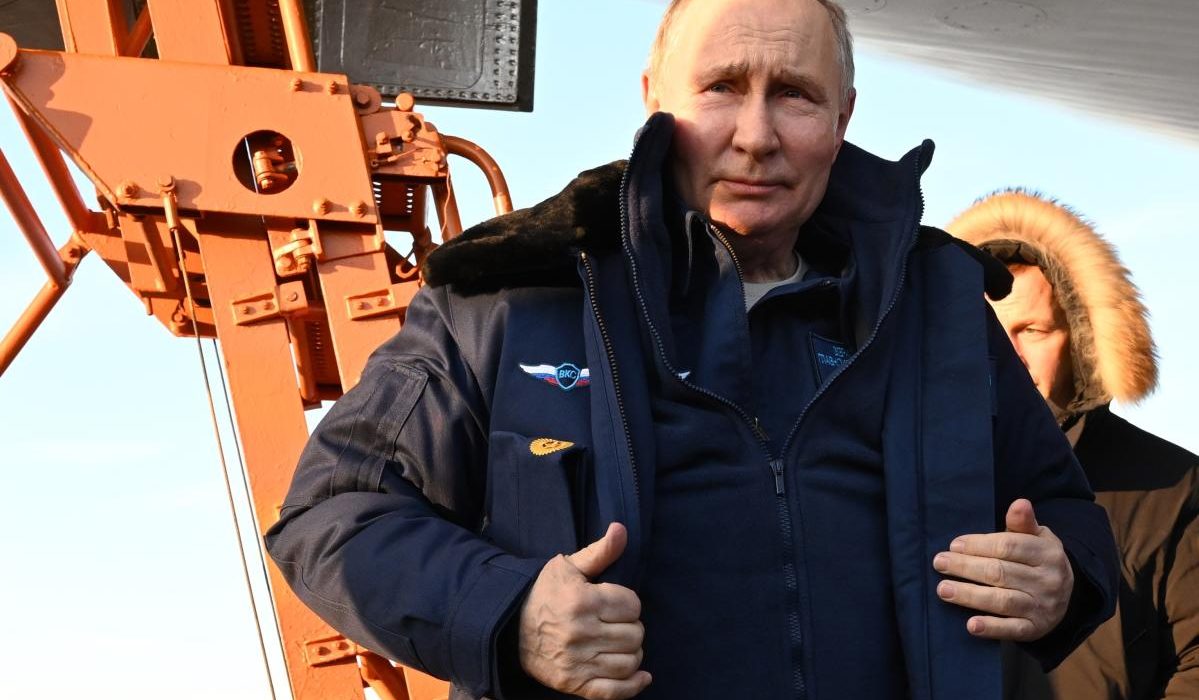Russia’s invasion of Ukraine two years ago was a shambolic mess. Instead of the quick surrender Russian President Vladimir Putin expected, Ukraine stood firm and an alliance of Western nations clapped back with military aid for Ukraine and unprecedented economic sanctions on Russia. In the first months of the war, it looked as if Putin had made a colossal mistake.
Two years later, Russia has surprised the world with its economic resilience and its ability to absorb horrific losses that would paralyze most other nations. Ukraine and its allies aren’t losing, but they aren’t winning either, and Putin could yet win a battle of wills with the West. Perhaps more daunting, Russia is demonstrating that the capitalist might of the United States and Western Europe may not be able to defeat a militaristic petro-state unbound by pesky democracy.
“Russia is feeling quite comfortable within the economic dynamics,” Maria Snegovaya of the Center for Strategic and International Studies said during a Feb. 14 panel discussion. “They are ramping up domestic production of weapons, including tanks, rocket launchers, artillery, and missiles, by more than twofold, and in some instances by more than tenfold. One can hardly describe the sanctions as a success.”
Yet they are remain the punishment of least resistance. The Biden administration announced a whole new set of sanctions against Russia on February 23, following the death of Putin critic Alexei Navalny in a Russian prison, likely murdered by Putin operatives. The new measures go deeper than prior efforts to constrict Russia’s financial system, squeeze oil and gas revenue and impede weapons production.
All told, these punitivies measures have certainly challenged the Russian economy, which shrank by 2.1% in 2022, the first year of the war. But growth rebounded last year, and the International Monetary Fund expects Russia’s economy to grow another 2.6% this year. A surge in defense spending is offsetting a decline in Russia’s civilian economy and keeping growth going.
Energy exports are Russia’s largest source of revenue, and they’ve held up well enough for Russia to finance a surge in defense spending. Russia’s energy revenue actually soared after the 2022 invasion, because energy prices spiked. By the middle of 2023, Russia’s energy revenue had dipped to about 70% of prewar levels, according to Finland’s Centre for Research on Energy and Clean Air. It has since recovered to about 75% of prewar levels.
In 2023, the United States, the European Union, and other nations imposed a price cap on each barrel of Russian oil. That plan requires any purchaser of Russian oil cooperating with the plan to pay no more than $60 per barrel if Russia ships the oil using any infrastructure or service, such as insurance, provided by one of the participating countries.
The price cap has reduced Russia’s oil revenue, but Russia has also found ways around it. It has purchased a “shadow fleet” of tankers not dependent on Western services and also found some buyers in the participating nations simply willing to flout the price cap, which is spottily enforced. Plus, huge energy purchasers such as China, India, and Turkey don’t abide by the cap, and they’ve become Russia’s biggest energy customers.

Russia has also formed new alliances with North Korea and Iran, which are suppling it with artillery shells, combat drones, and other types of military equipment Russia would rapidly burn through without reinforcements. China is helping too, by selling Russia many types of technology products now banned by Western sanctions, including “dual-use” technologies such as computer chips that can be used in weapons production. Finally, Russia gets a lot of banned Western technology through third-party countries, including Iran.
Drop Rick Newman a note, follow him on Twitter, or sign up for his newsletter.
Ukraine has allies too, obviously, and as the war enters its third year, Germany and other European nations that have shirked defense spending for decades are finally starting to boost it. But for anybody expecting capitalist industrial might to muster a new “arsenal of democracy” able to vanquish an axis of nettlesome dictators, the results, so far, are thoroughly discouraging.
With help from the stunted economies of North Korea and Iran, Russia has developed something like a 5-to-1 artillery advantage over Ukraine, which may be Ukraine’s biggest battlefield shortcoming at the moment. That likely contributed to Ukraine’s recent loss of Avdiivka, a key crossroads in eastern Ukraine. Europe is ramping up production of artillery shells, but it takes a year or more to get those into the field in Ukraine.
America’s role in the war has become an embarrassing nihilistic exercise. Until this year, the United States was Ukraine’s indispensable ally and biggest military supporter. A cabal of isolationist Republicans in the House of Representatives, goaded by Putin sympathizer Donald Trump, the former president, are now blocking another $60 billion in assistance President Biden has asked for, despite broad support for a new aid package from majorities in both houses. That aid might still come through, but the opposition validates Putin’s belief that Western democracies and their fickle politicians will tire of the war before he does. Without US aid, Ukraine might be able to keep most of the terrain it now holds but probably not dislodge Russia from seized terrain.
There’s no end to the war in sight — but a sort of timetable is forming. Jack Watling and Nick Reynolds of the British research group Royal United Services Institute (RUSI) think Russia will use 2024 as a year to rebuild its tattered army and amass the artillery, tanks, missiles, and other weapons it will need to make major territorial gains in 2025. If that happens, Putin might feel he’s reached a high-water mark and consider some sort of cease-fire, which he certainly isn’t serious about now.
But pressures will continue to bear on Russia’s ability to rebuild its war machine, which could make Western resolve more important than ever. The International Monetary Fund’s managing director recently said the shrinkage of Russia’s civilian economy means “very tough times” are ahead. Watling and Reynolds think Russia’s defense production will peak in 2025, but then start to degrade, as the accumulating effects of sanctions and battlefield losses pile up. Around the same time, Europe’s own defense production should finally be gathering steam. Ukraine may finally be operating F-16 fighter jets by then.
All the while, Russia is losing an astounding number of troops, with perhaps 350,000 killed and wounded so far. Russia is a large and populous country, but it’s running out of convicts to fill infantry units and young people are fleeing the country. The pool of troops is far from bottomless.
So there’s hope for Ukraine — if its allies can stop wobbling and begin to match Russia’s industrial mobilization. “If the [US] funding is passed, I would be quite optimistic about Ukraine’s potential in 2025,” Max Bergmann of the Center for Strategic and International Studies said at the Feb. 14 panel discussion. “Russia, in its hubris, [is] launching constant offensives [and] losing lots of people. If US aid continues and European production ramps up, Ukraine will be in a very strong point to continue this war into 2025.” The real question is whether its capitalist allies will stay in the fight or retreat.
Rick Newman is a senior columnist for Yahoo Finance. Follow him on Twitter at @rickjnewman.
Read the latest financial and business news from Yahoo Finance







